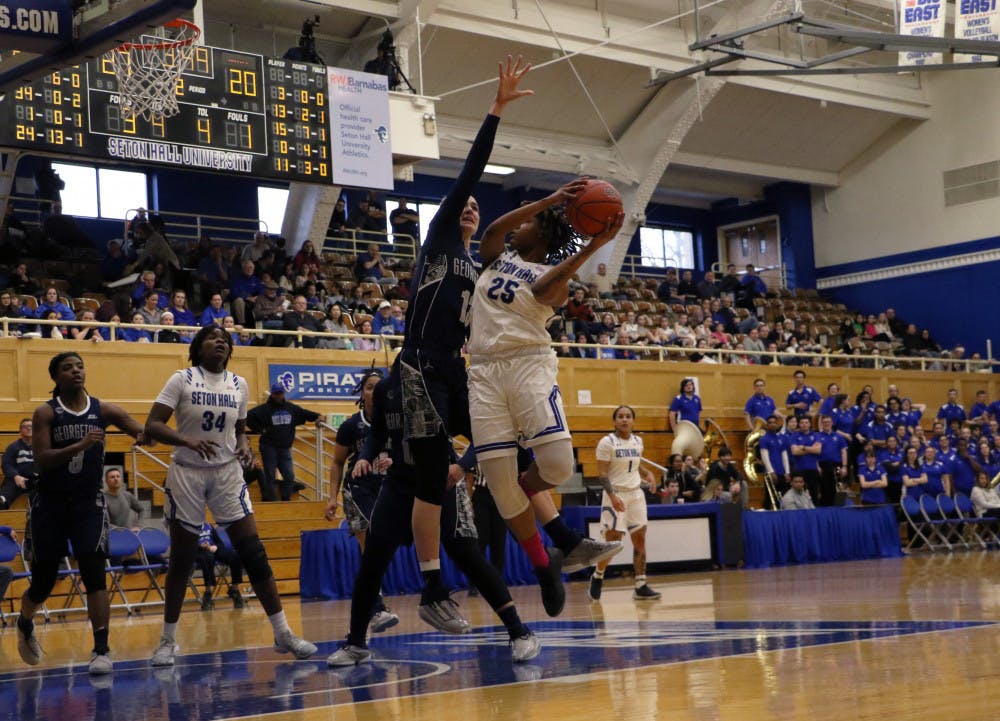South Orange Chief of Police James Chelel has increased the number of police officers in downtown South Orange during weekend evenings in response to a large gathering of teenagers during the night of March 20.
Village President Douglas Newman said, in an e-mail interview, South Orange Police estimated 300 to 500 teenagers congregated in a few downtown blocks, resulting in blocked sidewalks and streets. According to Newman, the group gathered between 8:30 p.m. and 9 p.m., the police were summoned and, with the help of other police agencies, the crowd was dispersed by 10 p.m.
Police from Maplewood, West Orange, Orange and East Orange, as well as NJ Transit police, assisted with dispersing the crowd, according to Newman.
The crowd of teenagers impacted business in the downtown area, blocking access to some stores.
"I had to shut down my store an hour and a half early," Tyce Palmaffy, owner of Cold Stone Creamery said. Palmaffy cited safety concerns as a large part of his decision to close early.
Palmaffy said he thinks teens were drawn to South Orange because it is a safe place compared to the areas they come from.
"South Orange is a safe town to come to versus Irvington, Newark and East Orange," Palmaffy said. "Kids have no place to go to that's safe in their communities. We've all congregated as children."
Newman said that SOPD officers estimate 80 percent of the crowd came from nearby communities.
Palmaffy said he has no problem with teenagers gathering in South Orange, but that the Village should have seen the problem coming.
"I'm not upset about (teenagers coming to South Orange)," Palmaffy said. "I am upset that the town has ignored it as a growing problem for the past few years."
Newman declined to provide information about when additional police will be in downtown South Orange or how long the increased presence will be maintained, however he said the SOPD is committed to providing for the safety of the community.
Palmaffy, however, said the extra police have been in the downtown area every Friday and Saturday evening for the last three weeks.
Newman said the "teens were summoned to South Orange via social media tools, such as Facebook, MySpace, and Twitter, typically accessed via cell phones." He also said the "speed and effectiveness" of social media contributed to the sudden gathering in South Orange.
Palmaffy said he hopes the increased police presence will deter another gathering, and he said does not believe that there is much the Village can do besides maintain the increased presence on weekends to prevent a recurrence.
According to Newman, the Village is taking steps to prevent and pre-empt a recurrence.
"In addition to enforcing zero tolerance for disorderly conduct, a number of substantive staffing, infrastructure and technology strategies have been, and soon will be implemented."
South Orange residents have, as a result of the March 20 gathering, inquired about the Village's enforcement of anti-loitering and code-of-conduct ordinances, according to Newman. Historically, Newman said, anti-loitering laws violate federal and state constitutions.
"While South Orange Police Officers have had an anti-loitering ordinance as an enforcement tool since 1973, such laws have for some time, and in many jurisdictions, been found to be violations of both the federal and state constitutions," Newman said. "South Orange's police chief is committed to redouble his Departments effort to enforce zero tolerance for disorderly conduct in the presence of the types of anti-social behaviors witnessed on March 20th."
Newman also said residents inquired about imposing a curfew, but cited requirements in state law, as well as other logistical problems, for the impracticality of a curfew.
"A 1995 New Jersey statute gives municipalities the authority to enact a curfew ordinance. If enacted, the ordinance must adhere to the terms of the statute," Newman said.
Newman added since the statute has many limitations it would be difficult to enforce.
"A curfew cannot begin before 10 p.m., approximately two hours after teens historically have started congregating," Newman said. "The number of statutory exceptions, which can be learned and feigned by minors and supportive parents/guardians; the inability to make a related arrest; and, the requirement to hold a minor for retrieval by a parent/guardian, which will occupy our police, whose time would be better spent on patrol in our downtown and residential neighborhoods," complicate the implementation of a curfew.
"Importantly, these regulations must be enforced uniformly in a non-discriminatory fashion with respect to all minors – residents and non-residents alike. While South Orange's Board of Trustees may consider imposing a future curfew, other remedies currently are viewed as more effective for targeting criminal misconduct by minors," Newman said.
Newman has said the Village has received positive feedback from residents regarding the increased police presence.
"Increased police presence in our downtown during busy periods clearly has a demonstrable impact on public safety, as evidenced by the very positive public reaction during the three weeks following March 20," Newman said. "While increased staffing obviously comes at a price, it's the shared view of the Board of Trustees and me that it's a small price to pay for public safety."
Brenden Higashi can be reached at brenden.higashi@student.shu.edu.





